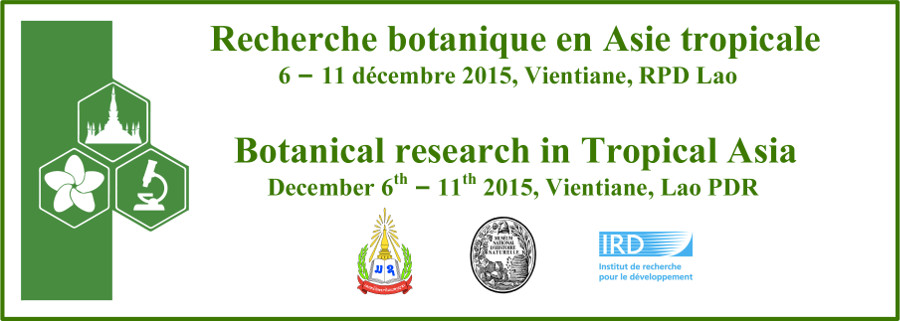It is important to know the local flora accurately to make a strategy for conservation priority. We have investigated plant diversity in Southeast Asia in the past 5 years, using a standardized belt-transect method. This method is to record presence of all vascular plant species within a 100 × 5 m (divided into ten subplots of 10 × 5 m), and also height and DBH for trees over 4 m tall.
We surveyed at 106 sites in various types of forests such as kerangas, dry deciduous, seasonal evergreen, hill evergreen, and montane evergreen forests, from 24 to 3,031 m elevation in Cambodia, Indonesia (Java, Kalimantan, Sulawesi, Sumatra), Japan (Ryukyu), Malaysia (Peninsula, Borneo), Thailand, Taiwan and Vietnam. The highest species richness was observed in Borneo, West Kalimantan and Sumatra, where 415, 397 and 390 species/500 m2 were recorded, respectively. In Indochina region, Mt. Hon Ba, Vietnam and Mt. Bokor, Cambodia showed relatively higher species richness than the other areas.
Through our surveys, we collected more than 22,000 voucher specimens including many rare and undescribed species, with precise GPS information, field photos, digitized specimen images and dried leaf pieces for DNA analysis. In case of Mt. Bokor, where we collected 2,216 specimens of woody species and identified 770 species in 108 families, 122 species including 24 undescribed species were newly recorded for flora of Cambodia (16% of total woody flora has not been known before). Among them, many species were recently published, as Heteropanax bokorensis Tagane & Nagam., Schefflera cambodiana Yahara & Tagane, Dichapetalum cambodianum Tagane & Nagam., Elaeagnus elongatus Tagane & V.S.Dang, Elaeocarpus bokorensis Tagane, Croton phourinii H.Toyama & Tagane, ...
Our method is efficient and helpful for recording local flora quickly. The checklist of local flora and information of rare plant species would enable us to develop conservation planning.
- Poster

 PDF version
PDF version

